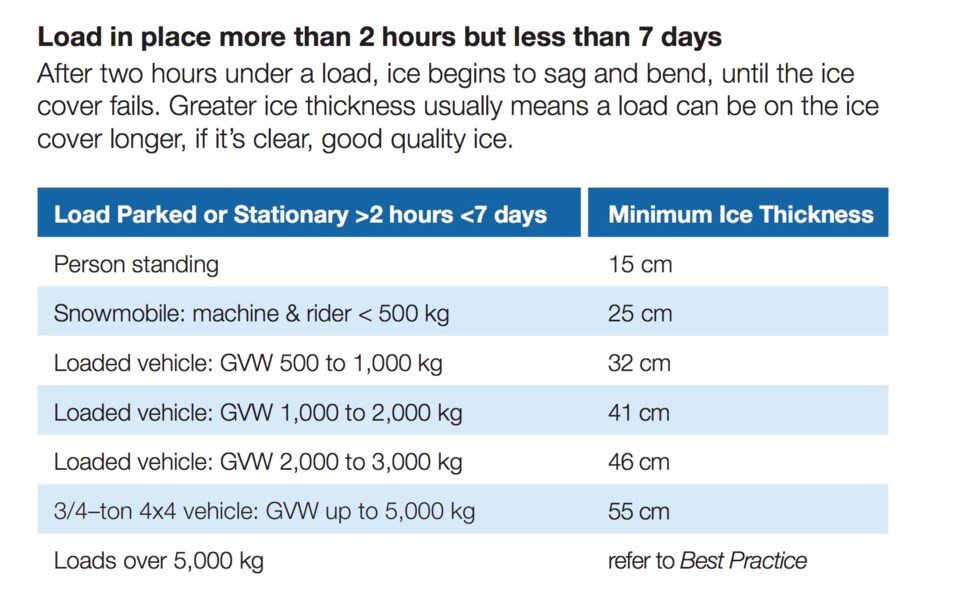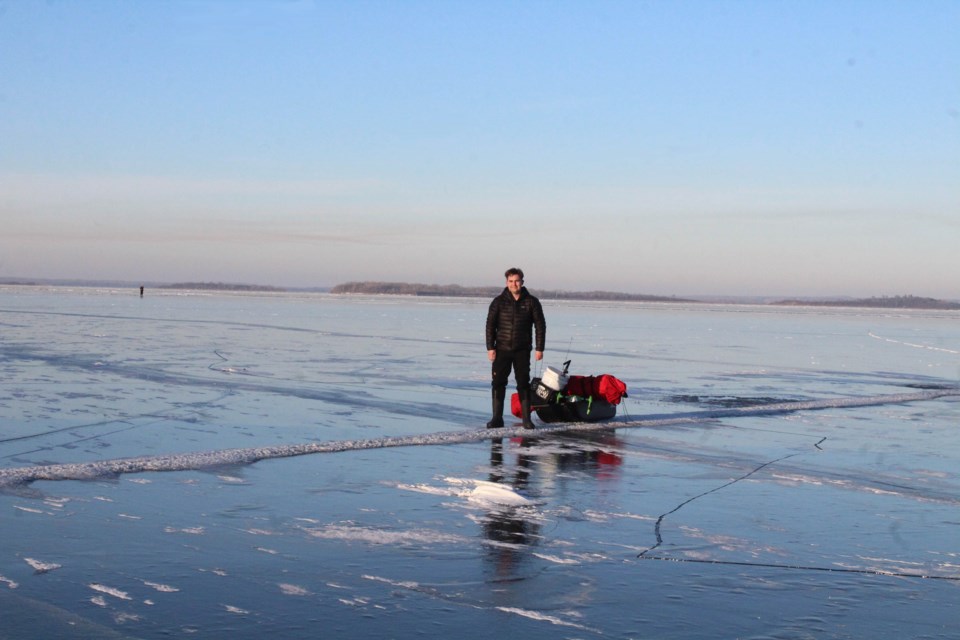LAKELAND - The spot where Peter Benson was ice fishing on Lac La Biche lake last weekend was about 100 feet off shore and 12 feet above the lake-bottom.
The Lac La Biche man didn't need a depth-finder to know how far down it was — he could just look. Down below his feet, in a hole cut through a clear layer of ice that stretched across the lake, his jig hook bobbed just above the lake-floor. The hole that his auger had just cored through the 10-inch thick ice was barely distinguishable in the clear ice.
A little to the left of the bobbing fish hook was a basketball-sized, moss-covered boulder clearly visible under the water. Benson's ice fishing spot was about 20 feet from a bare patch of the lake bottom, with rippled sand that created what looked like a large, slender, tan-coloured diamond. What might have been a small pike darted by the furthest end of the diamond formation, about 20 feet away from where the winter-time fisherman was standing. The fish's quick movements created a little dust cloud of sediment that floated and slowly faded in the afternoon sun's rays that shone through the ice.
From where he was standing, Benson could see the lake bottom all around him.
A lack of any significant snowfall mixed with sub-zero temperatures in recent weeks across the region has helped to create a unique feature on area lakes. Smooth frozen lake surfaces, most that are now covered by at least a foot of solid ice, are offering people a unique and unobstructed view of winter-time waters. In some cases, where winds or freeze and thaw conditions haven't created heaves and pressure cracks, the frozen surfaces of Lakeland lakes have also become giant-sized skating rinks, offering up square kilometres of flat, clear ice. In other places, like the causeway on Lac La Biche lake near Sir Winston Churchill Provincial Park, people like Peter Benson are enjoying a new viewpoint for ice fishing.
"It's so interesting to see below the ice," said Benson, who has fished at the same place with family members for years.
Despite the awe of literally standing on water, and seeing the lake bottom, rocks, sand and vegetation, Benson didn't see any fish.
Pulling a sled packed with ice fishing equipment back to the shore, he said he be back — for the fish and the view.
"It's one of those northern experiences," he said.
Ice thickness and safety
A few hundred feet from where Benson was coming off the lake, a group of ice fisher-folk had drilled several holes and were watching for action through their own area of clear ice. While most some stood and other sat in small chairs, one had driven a quad onto the ice and was sitting on the machine's seat.
While local police and fire officials were warning residents about ice thickness in the middle of November due to unseasonable temperatures and a lack of snow, most lakes in the region are now reporting ice thickness of at least 12 inches.

According to the Alberta provincial government and Work Safe Alberta's Field Guide to Working Safely on Ice Covers, there must be at least 15 centimetres — or about six inches — of good, strong ice over a water surface for a person to safely stand. At least 10 inches of good quality ice is needed to hold weight of a single ATV or snowmobile and 18 inches in needed to safely hold the weight of a full-sized pickup truck.
On average, the ice surface on a lake will increase in thickness by about one-and-a-half inches each day when temperatures remain constantly below minus 10 Celsius. By the middle of winter, most area lakes have reached a maximum ice thickness of about three feet.
The last time area lakes were frozen with no snow cover was in 2015.
Temperatures for the Lakeland region going into the new week continue to be moderate for the time of year, with daytime highs ranging between 0 and minus six degrees, and nighttime temperatures dropping to between minus 10 and minus 16.



